|
|
St. Anne's Bibles
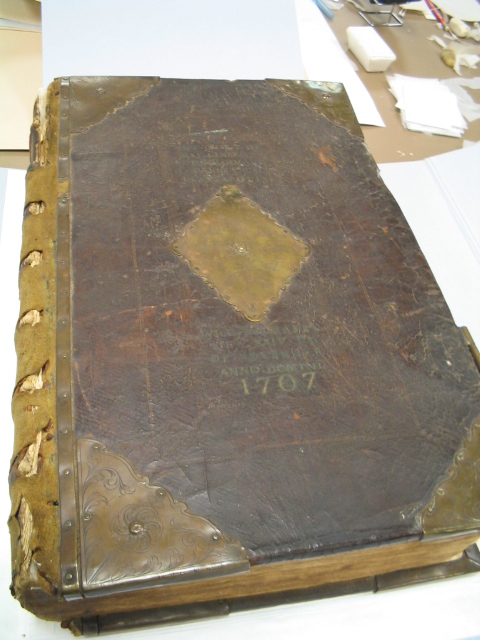
MSA SC 15-1-67 Three damaged Bibles were brought to the Archives
by the Vestry Board of St. Anne's Protestant Episcopal Church in Annapolis
for assessment and possible treatment.
The Pastor agreed to the Lab's suggested treatment plan.
While the Bibles were being repaired the Board decided to leave the Bibles in the Archives'
care due to our superior storage and secure facilities.
The two smaller Bibles were in better condition than the oversized one,
each of the two smaller Bibles received minor repairs with Japanese tissue paper and wheat starch paste.
Additionally, one of the smaller Bibles had its outer leather binding repaired with
klucel-g (a consolidator) and color-tinted Japanese tissue paper. The Hammond Bible shown here, from 1707,
recieved the bulk of the repairs.
Although the leather spine of the Hammond Bible had deteriorated over time, the Church
chose not to have any work
done on the binding because the sewing structure was still very strong. The bosses or metal
pieces on the corners of the front
cover remained attached and intact as well as the clasps.
Before Treatment:
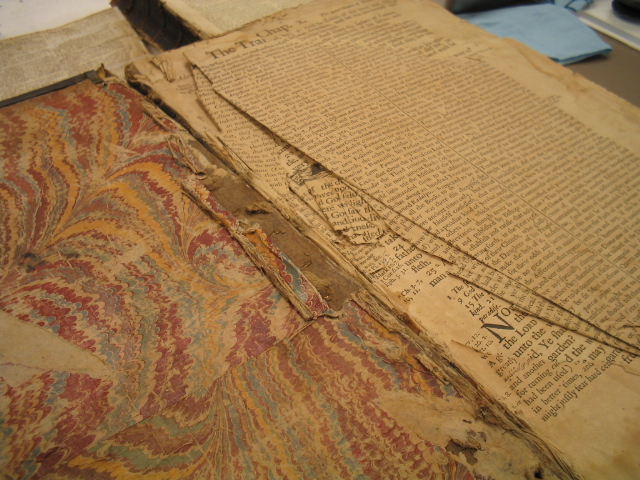
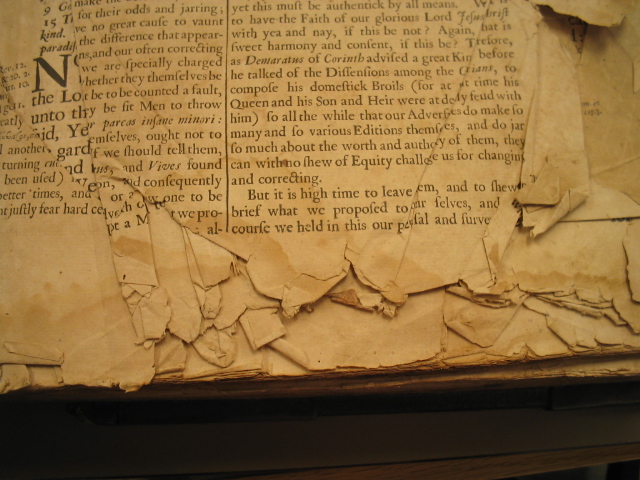
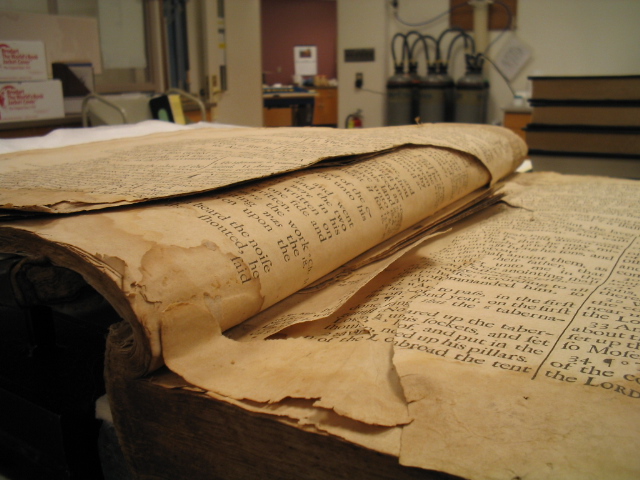
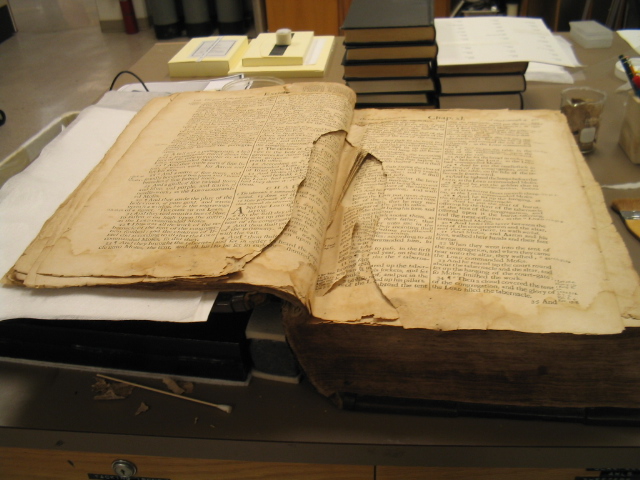

In the above pictures you can see the condition the Bible was in before repairs were undertaken. Over 300 years the structure
of the book remained strong, but the paper ripped and crumbled, requiring extensive mending.
To the left: a previous attempt at mending the Bible. At some point in the past someone used newspaper
and animal glue to hold together some of the severely torn pages. Before the mends were completely dry the Bible was shut,
allowing mold to grow in the moist conditions. We removed as much newspaper as possible with wet poultices and mini-spatulas.
However, the newsprint left residue from the ink on the pages of the Bible that was unable to be removed.
After Treatment:
These pictures show some of the smaller tears that were mended.
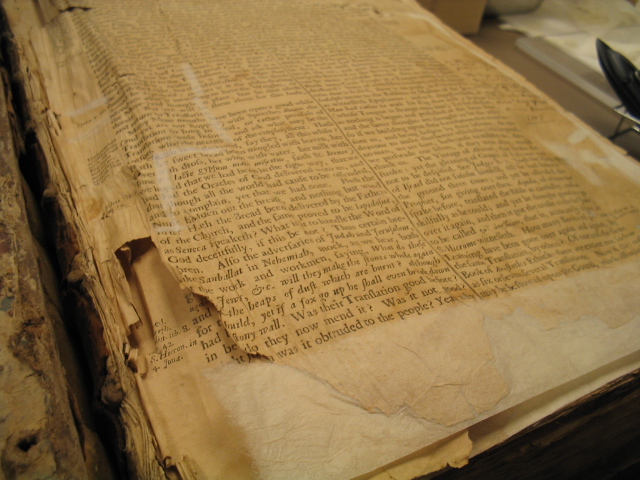
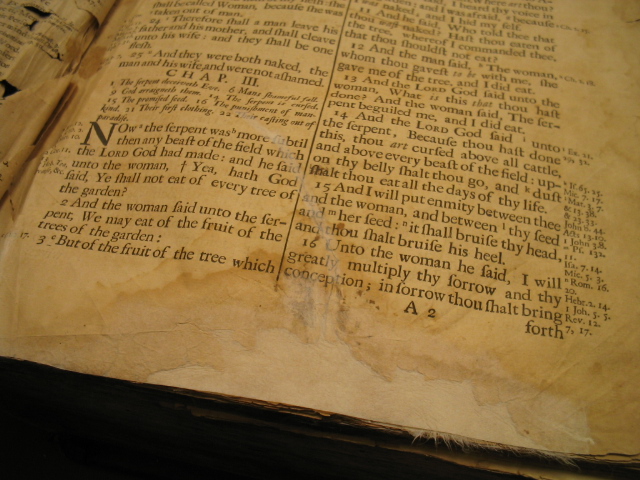
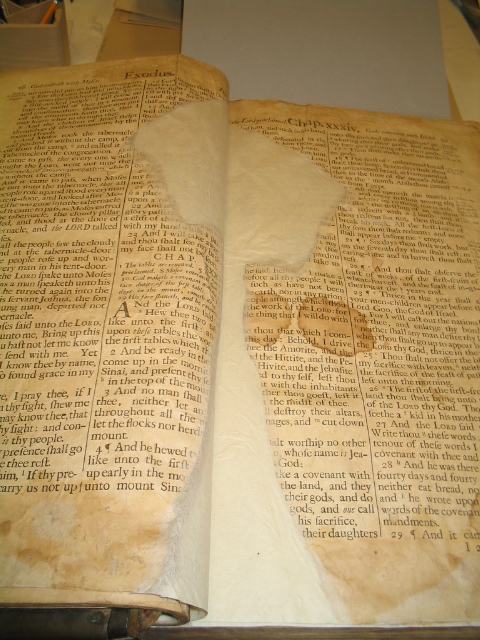 Many pages had their center parts torn out, leaving only the outer part of the page.
Because these pages were not attached to the rest of the text block, they were treated outside the book, and
then tipped back into the book when the paper mends were finished.
Many pages had their center parts torn out, leaving only the outer part of the page.
Because these pages were not attached to the rest of the text block, they were treated outside the book, and
then tipped back into the book when the paper mends were finished.
The recreation of the structure of the page involved the following process, called lining/inflling:
Using clear mylar we traced the outline of the missing section
The outline was then cut out and used as a template to water-tear the Japanese tissue paper to the right shape
Two versions of the same shape were made, one piece of tissue was spread to completely cover the missing space and to
overlap with the remaining page, while another piece was made to line the inside of the missing space. This process leaves
as little of the text covered by mends as possible.
Once the tissue was torn to shape, we used wheat starch paste to adhere the mends to the paper
The lining was left to dry under heavy weights so the page would be as flat as possible
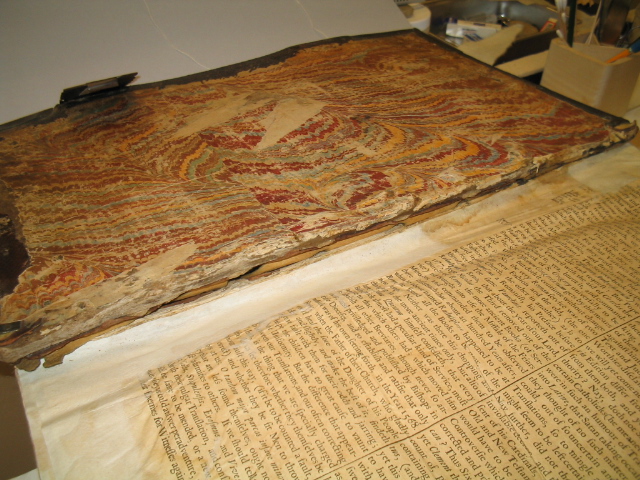
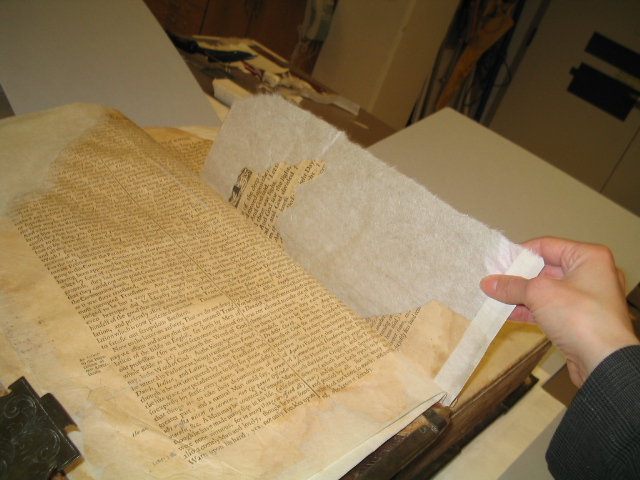
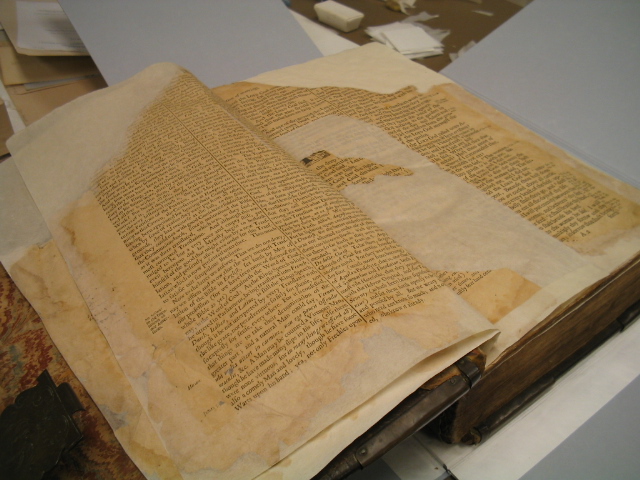
In some cases (as pictured above and to the right), most of the page had disappeared.
When the majority of the page was gone, whatever remnants were left were made into a page with Japanese tissue infilling.
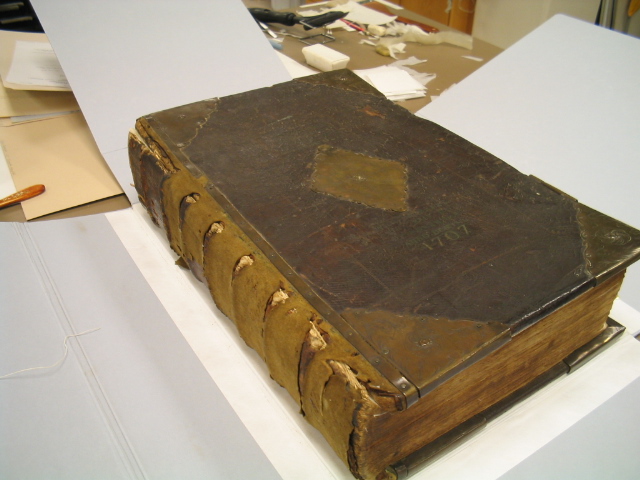
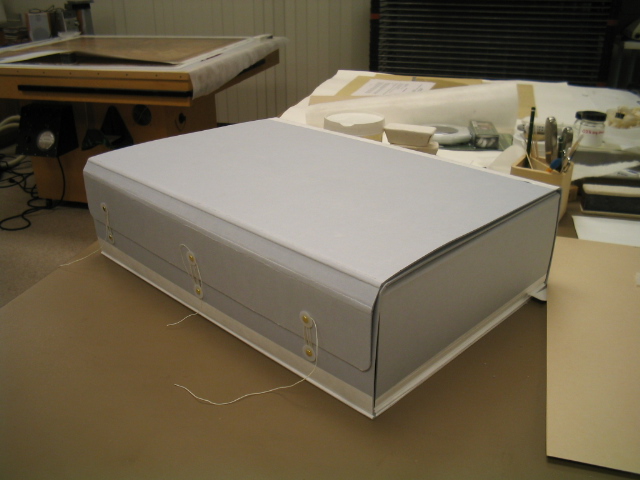
Finally, a phase-box was custom-made out of sturdy blue-boad for each Bible and then placed in
secure and climate-controlled storage.
|







 Many pages had their center parts torn out, leaving only the outer part of the page.
Because these pages were not attached to the rest of the text block, they were treated outside the book, and
then tipped back into the book when the paper mends were finished.
Many pages had their center parts torn out, leaving only the outer part of the page.
Because these pages were not attached to the rest of the text block, they were treated outside the book, and
then tipped back into the book when the paper mends were finished.





